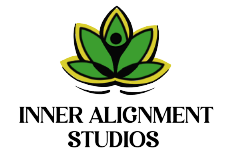Healing retreats offer a unique opportunity for individuals seeking personal growth and rejuvenation. Whether you’re looking to heal emotionally, spiritually, or physically, these retreats provide an environment designed to support your journey. In this blog, we will explore what you can expect during your time at a healing retreat.
Step 1: Understanding the Purpose of Healing Retreats
Healing retreats focus on facilitating recovery and inner peace. They provide structured approaches aimed at promoting overall well-being.
These retreats are designed to help you step away from daily distractions and immerse yourself in a supportive atmosphere. By doing so, participants can focus on self-discovery and personal healing.
It’s important to understand that healing is a personal journey. Different individuals may seek different outcomes, whether it includes emotional healing, spiritual awakening, or physical revitalization.
This unique experience aims not only to help you heal but also to empower you to take charge of your life. Ultimately, the purpose is to cultivate a long-lasting sense of well-being.
Step 2: Choosing the Right Retreat
Research different types of retreats based on your needs, such as yoga, meditation, or nature therapy. Look for reviews and testimonials.
When evaluating your options, consider logistics such as location, duration, and accommodation. A tranquil setting can significantly enhance your healing experience.
Make sure the retreat aligns with your personal values. Some may focus on holistic methods, while others might incorporate traditional therapies. Finding the right fit will set the stage for a successful retreat.
Connecting with previous attendees can provide valuable insights. Ask about their experiences; their feedback could guide you in picking a retreat that resonates with your goals.
Step 3: What Activities to Expect
Most retreats include activities like yoga sessions, guided meditations, workshops, and opportunities for personal reflection.
You might find daily schedules filled with various practices aimed at centering your mind and healing your body. Morning yoga, for example, sets a calm and positive tone for the day ahead.
In addition to physical activities, there are often group discussions where you can share your thoughts and feelings. These can foster a sense of community among the participants.
Workshops may cover various topics, from mindfulness techniques to stress management strategies, equipping you with tools you can carry beyond the retreat.
Step 4: Preparing for Your Retreat Experience
To get the most out of your retreat, arrive with an open mind, set personal goals, and pack essentials like comfort items and journaling materials.
Consider what might help you feel most at ease. Items like your favorite blanket or a cherished book can create a more comforting environment.
Establish clear intentions before your arrival. Reflect on what you hope to achieve, whether that be emotional healing or simply relaxation. Having these goals in mind will guide your experience.
Keep in mind that technology may be limited during the retreat. This could be a blessing in disguise, providing you with the chance to disconnect and truly focus on your healing journey.
Step 5: Integrating Lessons Learned After the Retreat
Post-retreat, take time to reflect on your experiences and integrate the practices into your daily routine for sustained growth.
Consider maintaining a journal to document the insights you’ve gained. This can help you track your progress and remind you of your journey long after you’ve returned home.
Revisiting the techniques and practices introduced during the retreat will be crucial. Whether it’s daily meditation or specific self-care rituals, incorporating these into your life will help solidify the benefits you’ve experienced.
Lastly, stay connected with the friends you met at the retreat. Having a supportive community can reinforce your healing journey and keep you accountable.
Embrace Your Healing Journey
Attending a healing retreat can be a transformative experience, offering insights and practices that can lead to lasting change. By preparing yourself and understanding what to expect, you’ll be better equipped to fully embrace the journey.


